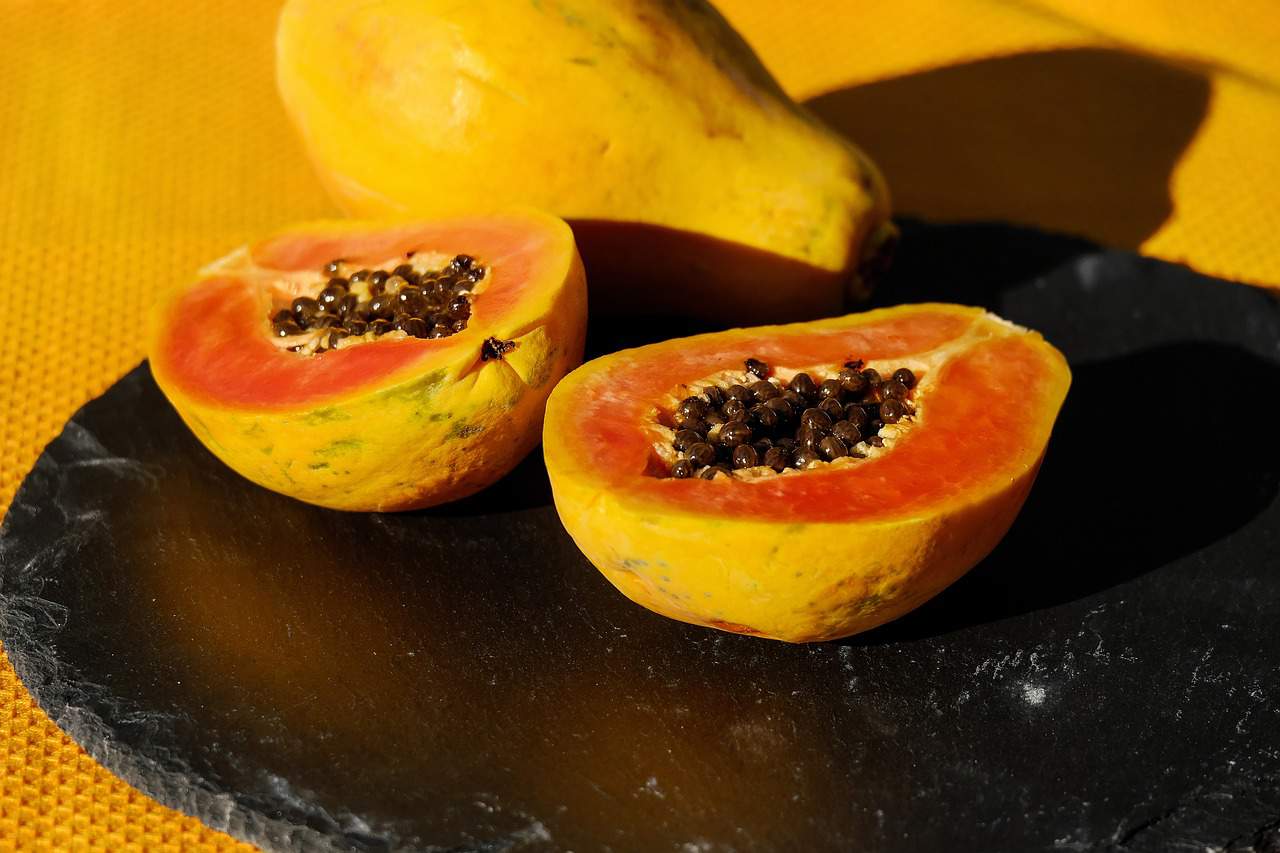Each day, more people realize how important proper nutrition is for good health and vitality. Papaya is a perfect example of food as medicine, and with that in mind, here are things we’ve learned about papaya over the years.
The large, pink fruits originated in Mesoamerica, and they are esteemed for their unusual flavor and health-giving benefits. In Costa Rica, papayas thrive in coastal and mid-elevations of the country. They are a virtual warehouse of nutrition, containing vitamins A, C and E, along with calcium, iron, phosphorus, potassium and papain, an enzyme that helps break down food during digestion.
Papaya blended with aloe vera and water makes a fantastic drink for overcoming most digestive disorders. The seeds are a well-known remedy for intestinal parasites, while the leaves are used as a tea for preventing and treating malaria and dengue. Locals also make a vegetable dish from the root and trunk of the old papaya plants.
Also consider the production of fruit. On two square meters of land, one plant can produce up to 68 kilograms of fruit per year. Here’s how it’s done.
After centuries of breeding, several strains of papaya have evolved. The best trees for home gardens are the variety called solo, which are unique because they have flowers that contain both male and female parts, allowing them to pollinate themselves. Look for the long, solo papayas in the market for collecting seeds. Avoid the small Hawaiian GMO variety.
It’s best to rub the seeds first to break the outer tissue, and then plant them directly in the soil about 1 centimeter deep in hills at least 1 meter wide. The land should be prepared with compost or aged manures, and the soil should be well drained (therefore mounding is beneficial).
Plant about 10 seeds in a circle (the diameter of the circle should be about 50 centimeters). The seeds will germinate in five days, and within a month they will have sprouted knee-high. Soil drenched with compost tea will increase their growth and vigor.
When the plants reach 1-2 m, they begin to flower. It is now time to select the best solo in the circle and uproot the rest. Select one plant with best-elongated flowers.
If possible, add more compost to the tree to increase the plants’ growth and production. In the hotter regions, they produce sometimes within nine months, whereas in the cooler zones, they may take a year or more. Additions of lime, rock phosphate and ashes monthly also benefit the tree.
The papaya fruit fly is a serious pest that can cause extensive damage to the fruits. It looks like a wasp, and the female has a large ovipositor, which she uses to lay eggs in very young papayas. Bagging the fruit is the best method, but be sure to cut the bottom edges of the reused plastic bags for drainage and change the bags as the fruit grows. Traps also show promise, though, and leaf diseases can be prevented with the natural bactericide KILOL, seaweed extract and Effective Microorganisms (EM) spray.
We’ve learned it takes patience and practice to grow papayas, but the rewards are certainly worth the effort.
“Use your food as medicine and your medicine as food.” -Hippocrates
This article first appeared in 2013

